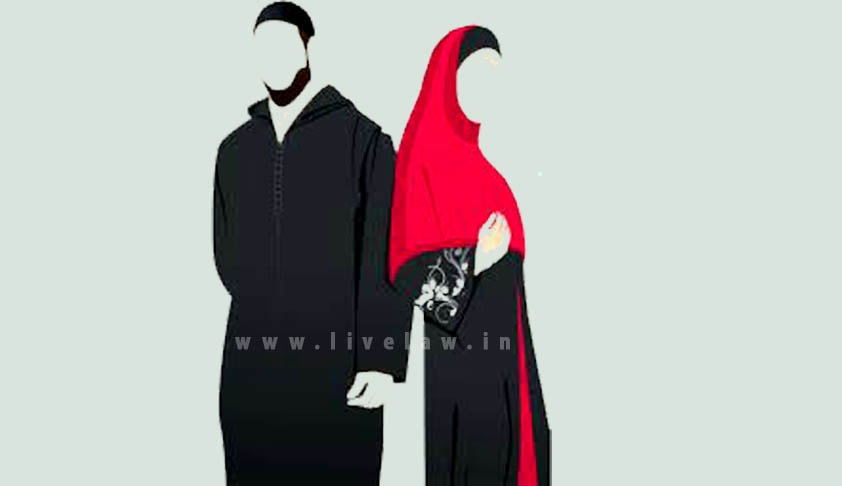Triple Talaq Is Only The Tip Of The Ice-Berg Of Discriminatory Family Laws
Dr Saumya Saxena
15 Feb 2017 5:43 AM GMT
The recent Allahabad High Court’s observation that has (yet again) declared that triple talaq has no constitutional validity has failed to make a lasting impact on public for two reasons. Firstly, that the Shamim Ara case of 2002 had already established that, and secondly, that once again the High Court passed the buck to the Supreme Court where Shayara Bano’s case remains pending...
The recent Allahabad High Court’s observation that has (yet again) declared that triple talaq has no constitutional validity has failed to make a lasting impact on public for two reasons. Firstly, that the Shamim Ara case of 2002 had already established that, and secondly, that once again the High Court passed the buck to the Supreme Court where Shayara Bano’s case remains pending still. Amidst this institutional passing-the-parcel between the Courts to the government, government to the Law Commission on the one hand, and the tug of war between the All India Muslim Personal Law Board and the various women’s organisations on the other; the agenda of triple talaq though unresolved refuses to disappear from public debate.
This public-ness of the debate on ‘personal’ laws is itself an achievement as we have begun to acknowledge the politics within families as not just a family matter (ghar ka masla) that must be deal with within the four walls of a house, but a space where rights of women have historically been compromised or denied. This debate in fact provides an opportunity to explore more nuanced questions about legal inequalities even when we deliberate on these laws within the discourse of tradition- that is, codification of personal law, not a uniform civil code.
The shrill voices that dominate the discourse force us to accept meagre suggestions as sufficient measures against gross inequalities simply to prevent further controversy on the issue. In the issue of triple talaq for instance, the matter is not simply about the fact that Muslim women are under the constant fear of being divorced unilaterally, but also that the Muslim man is not obligated to qualify such a divorce under any existing grounds for divorce that are available to women. What therefore makes this divorce ‘arbitrary’ is not simply in the spontaneous utterance of the word ‘talaq’ but the problematic notion that women are required to qualify their decisions under codified provisions whereas men are not. Ironically, anthropologist Sylvia Vatuk in her work illustrates how the All India Muslim Personal Law Board expressed reservations about granting women rights to divorce lest they use the provision ‘emotionally’.
Danial Latifi judgement (2001) has clarified and in many ways substantiated the protections that were granted to Muslim women upon divorce after the Muslim Women’s Protection of Rights on Divorce Act in 1986, and Shamim Ara judgement has also left no scope for ambiguity on the fact that spontaneous arbitrary talaq is not within Islamic law and therefore cannot be presumed to be acceptable under Indian law. However, there continue to be cases when such divorce has been effected and the Courts continue to mull over the issue rather than invoke the precedent, which is precisely what has necessitated a need for legislative intervention, only to uphold what is already contained in the existing judgments.
Thus the excessive focus on triple talaq not only makes us overlook discriminatory provisions in other personal laws (for instance Christian women have to wait longer in order to dissolve their marriage than a Hindu or a Muslim woman) but it also prevents us from entering any issue in greater depth as our attention is drawn to the most overtly politicised problem such as the ‘spontaneity’ of the triple talaq rather than its lawlessness, and the fact that it is an exclusive privilege of men. Thus, by simply de-recognising talaq-ul-bidat and encouraging talaq-e-ahsan or talaq-e-hasan for men still does not address the fact that women stand to lose their right to alimony and maintenance if they themselves initiate the divorce proceedings under Khula. Similarly, for a married Muslim woman ‘conversion’ from her religion to another is not even recognised as a ground for divorce whereas for a Muslim man conversion immediately and automatically puts an end to the marriage.
So controversial is the debate on personal law that any demand for change is either conflated to be a demand for a uniform civil code synonymous with the Hindu nationalist propaganda or written off as cultural relativism. The inability to see a difference between absolute uniformity- which is hardly desirable, and piecemeal codification is precisely what creates a biggest obstacle in the course of reform as different ends of the political spectrum endorse uniform civil code or status quo without realising that the remedy lies somewhere in between.
The numerous women’s organisations that have been at the forefront of reform such as Bharatiya Muslim Mahila Andolan, Awaaz-e-Niswan and Bebaak collective among others have never expressed a desire for a uniform civil code but rather for codification of Muslim Personal Law to being it in line with true Islamic tenets. The fact that these interpretations of Islam would also bring Muslim Personal Law in line with fundamental and constitutional rights is only a very fortunate collateral benefit of the scheme. Such an argument, if anything, strengthens the idea of legal pluralism. The Supreme Court on Tuesday has also finally acknowledged the distinction between a uniform civil code and the specific religious practices that are discriminatory.
If one was the locate the most aggressive votaries of the uniform civil code, these would be organisations such as the RSS and VHP who hardly recognise that it is the Hindu community that has historically benefitted most from the continuation of personal laws as the institution of Hindu Undivided Family ensures tax benefits to Hindu joint families.The Hindu Code Bill had also inched towards diversity in the years following its enactment and slowly shed its Brahmanical bearings by incorporation of property and inheritance laws and acknowledging regional difference with respect to recognition of coparcenary, or marriages within prohibited degrees of relationships (Sapinda). Cases such as Bhaurao Lokhande v. State of Maharashtra reveal that Hindu marriages Act also reeked of a strong caste bias, privileging Brahmin customs which continue to be addressed by amendments and judgments over time.
Muslim personal law historically had inspired religious reform of other religions. For instance, at a time when Hindu women could not be absolute owners of property and had no share in inheritance, Muslim personal law guaranteed women a share in property and treated them as legal persons. It was, in fact, only after the Sharia Application Act 1937 that movement for Hindu Women’s Right to Property Act 1938 had also picked momentum.
Similarly, during the discussions on Muslim Women’s Right to Divorce Act in 1986 there were further discussions on how Muslim women were never considered ‘parayadhan’ and daughter’s homes remained their own even after marriage and therefore the questions of maintenance being settled by women’s parental family was not received with shock or as an insult. Thus, these were potentially more progressive ways of theorising about the family.
An alternate imagination of the family will aid in imagining a more comprehensive reform of family law that can be sensitive to different moralities. 'Initiatives from within communities are coming to the fore and creating spaces for conversations about equality within communities before we contemplate equality between different communities.' One can only hope that these conversations extend beyond just the current (and political) focus selectively on triple talaq and address inadequacies of the gamut of family laws across all religions.
With four states in India awaiting election, arguments favouring a ‘status quo’, ‘codification’ as well as‘uniform civil code’all appear to yield political dividends. Thus the demand for a ‘uniform civil code’ is as politically motivated as the decision to ‘snub’ further discussion. Activists and traditionalists are ending up in echo chambers that reproduce similar arguments of how triple talaq is ‘not only unconstitutional but un-Islamic’, and others who say it is ‘un-Islamic but un-amendable’. The Muslim women’s movement has gained tremendous momentum in the last decade despite challenges it faced from within particular strands of the women’s movement as well as those of Muslim and Hindu orthodoxy alike. The underlying idea has to therefore be to address the demands of stakeholders rather than glorifying religious ‘law’ or holding ‘uniformity’ as synonymous with justice.
 Dr Saumya Saxena is a PhD from the University of Cambridge, MSc. from University of Oxford specialising on Family Law in India.
Dr Saumya Saxena is a PhD from the University of Cambridge, MSc. from University of Oxford specialising on Family Law in India.
[The opinions expressed in this article are the personal opinions of the author. The facts and opinions appearing in the article do not reflect the views of LiveLaw and LiveLaw does not assume any responsibility or liability for the same]
This article has been made possible because of financial support from Independent and Public-Spirited Media Foundation.


